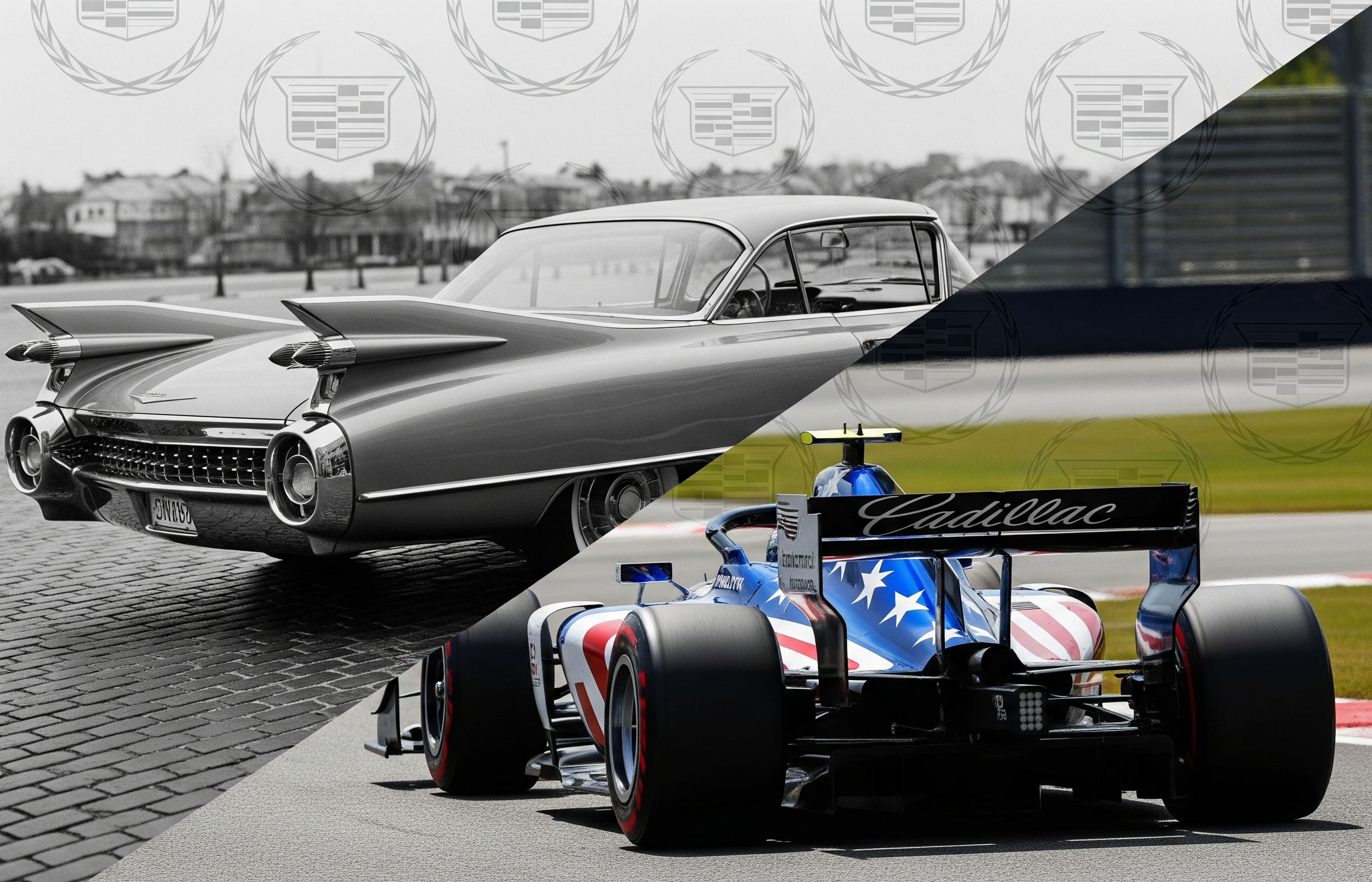The Evolution of Cadillac's Performance DNA
For decades, the name "Cadillac" was synonymous with American luxury—a symbol of success, comfort, and bold, imposing style. It conjured images of plush leather interiors, smooth V8 engines, and long, flowing tailfins. But in recent years, a transformation has taken place. Cadillac has shed its old skin, re-emerging as a serious contender in the world of high-performance vehicles and a player on the global motorsports stage.
This shift wasn't an overnight decision, but rather the culmination of a deliberate strategy to redefine the brand. Let's trace the journey of Cadillac, from the "Standard of the World" to a formidable force in racing, and see how its recent entry into Formula 1 is shaping its future.
The Foundation: Engineering Excellence and Early Power
While the image of a soft-riding land yacht is potent, Cadillac's roots were actually built on precision and engineering. In its early days, the brand was a pioneer, winning the prestigious Dewar Trophy for its interchangeable parts—a breakthrough that laid the groundwork for modern mass production. Cadillac was also one of the first to introduce the V8 engine, setting a new standard for power in American cars. These early innovations proved that the company had the technical prowess and ambition to push boundaries.
Through the mid-20th century, Cadillac continued to produce powerful engines, but the focus remained on luxury and comfort. The V16 and V12 engines of the 1930s were marvels of engineering, but they were designed to deliver a smooth, quiet ride, not to conquer a racetrack. The iconic tailfins of the 1950s and 60s, while a bold design statement, were more about style than aerodynamics.
A New Direction: The Dawn of the V-Series
The true turning point for Cadillac's performance identity began in the early 2000s. Facing stiff competition from European luxury brands, Cadillac recognized the need to inject a new level of excitement and driver engagement into its lineup. The result was the launch of the V-Series.
The 2004 CTS-V was the brand's shot across the bow. Powered by a Corvette-derived V8 engine and tuned on Germany's challenging Nürburgring, it was a declaration that Cadillac was no longer content to be a boulevard cruiser. The CTS-V was a legitimate sports sedan, and it was followed by other high-performance models like the STS-V and the XLR-V. The V-Series became the proving ground for Cadillac's engineering talent, introducing supercharged engines, manual transmissions, and track-ready components.
This performance focus culminated in the modern V-Series Blackwing sedans, which represent the pinnacle of Cadillac's gas-powered performance. These cars, with their incredible horsepower, sophisticated chassis, and aggressive styling, have earned critical acclaim and solidified Cadillac's reputation as a performance powerhouse.
The Motorsport Proving Ground
For Cadillac, building performance cars wasn't enough; they needed to prove their mettle on the track. The brand has a history of motorsport involvement, including a brief foray into Le Mans prototype racing in the early 2000s. However, their most successful and sustained efforts have been in sports car racing.
Cadillac has enjoyed immense success in the IMSA WeatherTech SportsCar Championship and the FIA World Endurance Championship with its V-Series race cars. These programs have not only provided valuable engineering data for their road cars but have also showcased the brand's performance credentials to a global audience. The V-Series.R prototype, in particular, has been a dominant force, securing wins and podium finishes at legendary races like the 24 Hours of Daytona and the 24 Hours of Le Mans.
The Ultimate Challenge: Why F1?
Cadillac's performance journey was always building toward a grander stage, and there is no grander stage than Formula 1. The decision to enter F1 as a constructor for the 2026 season is the ultimate expression of the brand's ambition and commitment to a performance-first future.
What led to this monumental decision?
Global Brand Recognition: F1 is a global spectacle with an estimated 1.5 billion viewers. A presence in F1 offers unparalleled exposure and is the fastest way to solidify Cadillac's position as a global performance brand.
Technological Advancement: F1 is a hotbed of technological innovation. From hybrid power units to advanced aerodynamics and materials science, the lessons learned on the F1 grid will directly influence the development of future Cadillac road cars, particularly in the realm of electric and hybrid performance.
A "Made in America" Story: The Cadillac F1 team, in partnership with TWG Motorsports, is a powerful "Made in America" story on the world's most international stage. This entry provides a platform to showcase American engineering and compete head-to-head with the world's most elite automotive marques.
What’s Happening Now?
Cadillac's entry into F1 for 2026 is officially approved. The team is building its operations from the ground up, with facilities in both the United States and the UK. They have been aggressively hiring top talent and are working to develop their chassis and aerodynamic package for the new regulations.
While they won't be building their own power unit for the initial seasons, they have a multi-year agreement with Ferrari for engines. This is a pragmatic approach that allows the team to focus on the chassis and on-track performance while they develop their own power unit for a future season, likely 2028. Recent reports also indicate that the team is finalizing its driver lineup, with experienced names like Sergio Perez and Valtteri Bottas being considered to lead the charge.
Cadillac's entry into F1 is more than just a marketing stunt; it is the natural evolution of a brand that has spent two decades meticulously building its performance credentials. It's a statement of intent that Cadillac is ready to challenge the best in the world, not just on the street, but on the track. The future of Cadillac is electric, high-performance, and now, officially, in Formula 1.

